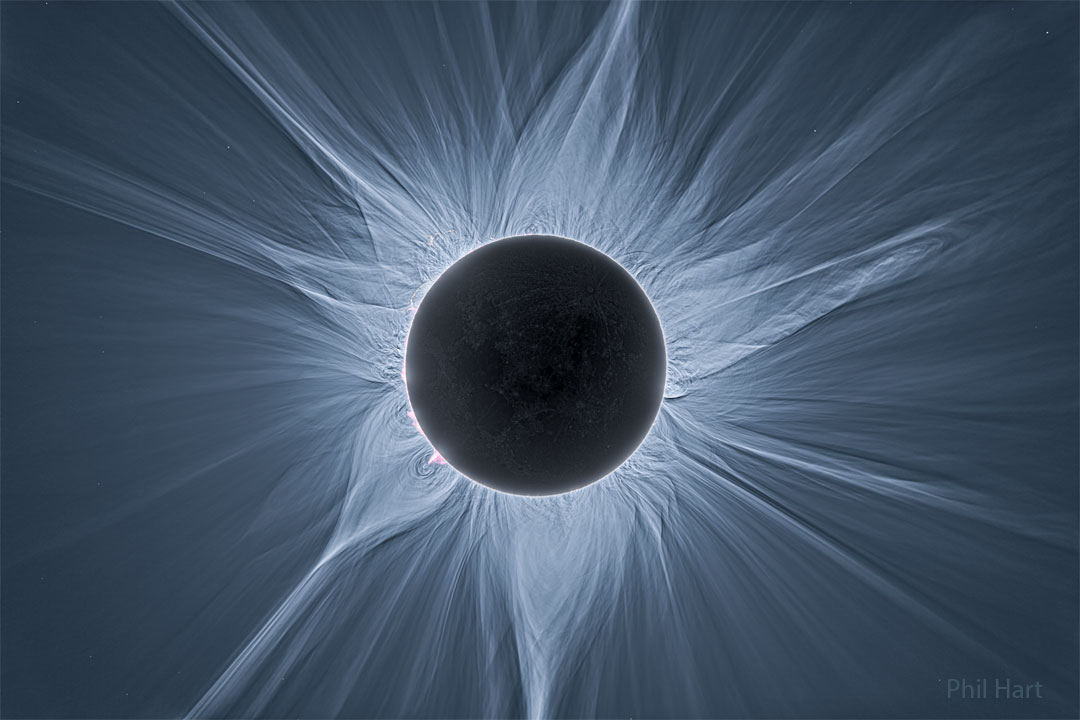2024年4月2日
Detailed View of a Solar Eclipse Corona
Image Credit & Copyright: Phil Hart
Explanation: Only in the fleeting darkness of a total solar eclipse is the light of the solar corona easily visible. Normally overwhelmed by the bright solar disk, the expansive corona, the sun’s outer atmosphere, is an alluring sight. But the subtle details and extreme ranges in the corona’s brightness, although discernible to the eye, are notoriously difficult to photograph. Pictured here, however, using multiple images and digital processing, is a detailed image of the Sun’s corona taken during the April 20, 2023 total solar eclipse from Exmouth, Australia. Clearly visible are intricate layers and glowing caustics of an ever changing mixture of hot gas and magnetic fields. Bright looping prominences appear pink just around the Sun’s limb. A similar solar corona might be visible through clear skies in a narrow swath across the North America during the total solar eclipse that occurs just six days from today.
NASA Coverage: Total Solar Eclipse of 2024 April 8
Tomorrow’s picture: celestial fireworks
全食日的细致日冕
影像提供与版权: Phil Hart
说明: 只有在日全食阶段的短暂黑暗里,才能轻易见到日冕。通常会被日盘炫光淹没的太阳外层大气(亦即广袤的日冕),其实是很迷人的景观。不过,日冕曼妙的细微结构和极大幅度的亮度变化,虽然肉眼可辨,却极难拍摄。然而,上面这幅整合多张照片和运用数位技术处理的影像,精采的呈现了2023年4月20日的日全食期间,摄于澳洲埃克斯茅斯镇的细致日冕景观。影像里,可以清楚看到不断变化的热气体和磁场混合体的复杂层状结构和焦散线。此外,还可见到从太阳临边伸出的粉红明亮环状日珥。于6天后即将登场的日全食期间,在北美洲狭窄全食带里的晴朗天空中,或许有机会见到类似的日冕。
NASA报道: 2024年4月8日日全食
明日的图片: celestial fireworks








4 Comments